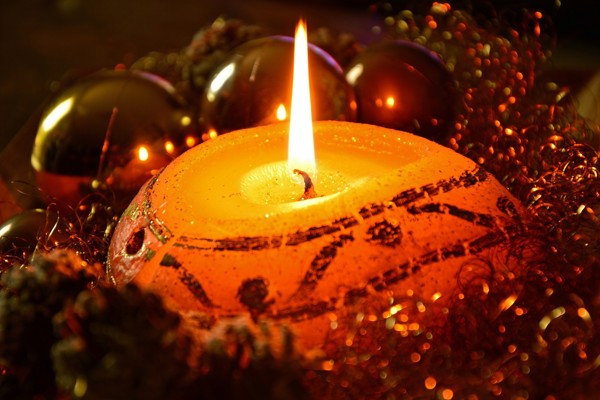Christmas, candles and the countdown to the SI redefinition

Following the recent decision, taken by measurement scientists from around the world, to redefine the International System of Measurement (SI) units; on the 20th of each month we will be looking at one of the seven SI base units. You’ll be able to find out where it’s used in everyday life, how it’s defined now, and the changes that will come into force on 20 May 2019.
On 25th November 1882, Gilbert and Sullivan’s Opera Iolanthe opened in London’s Savoy Theatre, and inadvertently started a Christmas tradition we still observe today.
In a first for theatre, the Swan United Electric Light Company was commissioned to create miniature lights which twinkled from wreaths worn by the lead fairies. At the time electric lighting was still cutting edge and the tiny lights – powered by battery packs hidden in costumes – amazed audiences. The term ‘fairy lights’ was born. A year later Edward Johnson, a colleague of Thomas Edison, put fairy lights on a Christmas tree for the first time.
UNIT OF THE MONTH: CANDELA
Which bring us to our SI unit of the month: the candela. The light, or luminous intensity, from a single clear indoor fairy light is approximately one candela, regardless of whether you have traditional tungsten filament fairy lamps or modern LED versions.
The candela is the only SI base unit linked to human perception. As the eye cannot see all light colours equally well, being most sensitive to yellow-green light, luminous intensity measures light adjusted for our human sensitivity to different frequencies.
Although the candela will effectively stay the same from 2019, as it is already defined in relation to other base units, the accuracy will be improved by updates to the second (find out more on 20 March) and the metre. The new definition will be:
The candela is defined by taking the fixed numerical value of the luminous efficacy of monochromatic radiation of frequency 540×1012 Hz, Kcd, to be 683 when expressed in the unit lm⋅W−1, which is equal to cd⋅sr⋅W−1, or cd⋅sr⋅kg−1⋅m−2⋅s3, where the kilogram, metre and second are defined in terms of h, c and ΔνCs.
With rapid innovation in energy efficient lighting the need for reliable ways to compare the brightness of different light sources has become ever more important. This includes our fairy lights. Clear tungsten fairy lights use about ten times the electricity of modern LED lights, and coloured tungsten fairy lights are even less energy efficient as most light is absorbed by the coloured coating. Yet LEDs create colours with more visible light per electrical watt using different semiconductor materials. Accurately measuring their luminous intensity allows us to compare the visual appearance of each.
The lights most people hang on their trees this Christmas will be LEDs. As with most modern lighting, the tiny twinkling bulbs that amazed 19th Century opera fans have been superseded by energy efficient alternatives. And for that we have the candela to thank.
Merry Christmas!
